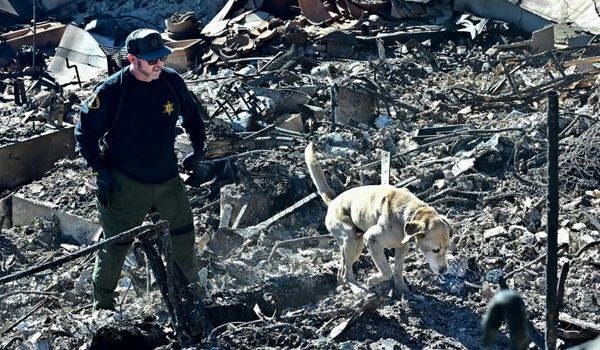A brochure from a sham get-rich-quick seminar on real estate purchasing might tell you to stay calm when the market panics, and panic when the market stays calm. It’s the kind of advice we hear often and rarely follow, and the same can be said for NFL teams as they approach free agency in 2022.
Indeed, most of the good damage, most of the economical savviness has already taken place. A handful of teams went head hunting last year during the pandemic at a time when most owners were locking their checkbooks in a fireproof safe due to the shrinking salary cap. The Patriots got Matthew Judon for a little more than $13.5 million per season. The Bengals got Trey Hendrickson for $15 million per season. In this market right now, Hendrickson is making more than $20 million a year. Judon is probably getting close to $18 million.
And so the parameters for success have shifted from economical opportunities to avoiding desperation now that the coffers are full again and the league’s council of billionaire playboys has a full pocket of television and gambling revenue money to spend. The Commanders doled out semi-serious capital on Carson Wentz. The Titans are paying Harold Landry as much as the Saints are paying Cam Jordan.
For those living in the coastal northeast, free agency now feels a lot like trying to find and purchase a home. A two bedroom, one bath for $800,000? Why not?
So when composing this list of teams who will define the next few weeks, we’re being careful. It’s not just who will spend the most money, but who will make the most of opportunities in a market rife with pitfalls. We wish we could retroactively celebrate the Bengals, who may be relatively quiet this year despite being one of the six highest-spending teams in the NFL over Zac Taylor’s first two seasons. We wish there was enough space on the internet to finger wag the Jaguars, who were set up beautifully by their previous regime to take advantage of the depressed market and instead ended up … you know.
Without much time to go before the illegal tampering really gets interesting, let’s get into it.

Eric Hartline/USA TODAY Sports
Los Angeles Chargers
If the Khalil Mack trade and Mike Williams signing are any indication, the Chargers are not going to take what happened this offseason in their division lightly. Brandon Staley was gutted by a frantic loss to the Raiders in the season finale and is trying to combat the talent surge with a rebuilt pass rush and, likely, some improvements at the cornerback spot. This is where the Chargers could move from improved to highly competitive. It’s been trendy for years to cite them as an outside Super Bowl contender, but a relatively healthy season, coupled with a handful of coverage players added in free agency and some thickness on the defensive interior could make this more of a reality. Staley knows this roster core could trend significantly in one direction or another based on how the next few months go. He’s also a hell of a recruiter. We’ll see if that translates to targeted urgency.
Miami Dolphins/Denver Broncos
We talked about this a little bit on the latest MMQB podcast, but we’ll expand on it here. We’re coupling these teams together due to the root similarities of their offensive identities. If Nathaniel Hackett decides to keep his ties to the Matt LaFleur/Kyle Shanahan system (he started as a pure West Coast offense coach and ended up helping the Packers blend that system into the Shanahan system to aid in Aaron Rodgers’s transition) and Mike McDaniel decides to stay in his roots, we could have some interesting cross-bidding. An example? Rodger Saffold was released by the Titans this week in a cash-saving maneuver. When Saffold came over from the Rams, I was told that he was an ideal outside zone guard, the kind of interior player who can make a lot of the requisite blocks. He could be a finishing piece for either of those franchises. Laken Tomlinson is also available. When Kyle Shanahan went to San Francisco, he began his career with a free agency mini-binge that helped him set up the offense. Players like Kyle Juszczyk. Weston Richburg. A Shanahan offense needs top-removing speed at the No. 1 receiver position. An extremely mobile center. Could Hackett and McDaniel find themselves eyeing similar players exhibiting these traits? Could other teams who are trying to copy the scheme be eyeing similar players? In that way, could we have a miniature post-Moneyball OBP spending surge on our hands?
Indianapolis Colts
The exciting part of the Carson Wentz trade is that we know they have to make a move now. Credit goes to Chris Ballard and Frank Reich, who have been anything but complacent after the stunning retirement of Andrew Luck. Jimmy Garoppolo feels like a front-runner, though Kirk Cousins and Matt Ryan are in tenuous situations at best. It feels like a much larger section of the league would be open to Indianapolis in a way they weren’t to Washington. This is an offense quarterbacks want to play in. This is a team that is one non-destructive quarterback away from reaching the realm of Super Bowl contention. If I were a rival executive, I wouldn’t love the idea of Chris Ballard having more than $70 million in cap space in a winnable division with some of those core pieces. Losing former defensive coordinator Matt Eberflus hurts, but one or two premium upgrades plus some comfortable adequacy at the quarterback position makes this team a favorite to win the AFC South.
Minnesota Vikings
New general manager Kwesi Adofo-Mensah comes from Cleveland, one of the youngest rosters in football (strategically), and inherits another one of the youngest rosters in football. I think the Vikings will be notable this year not for who they bring in but who they cast out into the market (if they decide to gut). I can’t imagine a Harvard and Stanford educated economist overspending to try and make a flailing attempt at finishing second to Aaron Rodgers and the Packers. Sorry to Vikings fans who envisioned something of a splash. Andrew Berry’s Browns went in notable, methodical waves trimming out the contractual fat before they felt they had a contending roster in place. The Vikings could put the best available quarterback on the market, roll with Kellen Mond for a season and evaluate later. Or, they could maximize value for some of their aging stars who would make for contending pieces on other rosters. The point here is to keep an eye on Minnesota but not in the traditional sense. One of the most interesting conversations I had at the combine was about Mensah and his long-term vision; how he could be the first general manger to truly bridge the gap between analytics people and football people. His first moves will be telling in terms of how they want to accomplish this, and how collaborative the effort will be between the front office and a new, young coaching staff.

Mark Konezny/USA TODAY Sports
Atlanta Falcons
The Falcons have already lost Calvin Ridley for the season, and could have been planning to trade him anyway. They are barely under the salary cap. They are a .500 presence in the NFL next year at best. It may finally be time to hit the eject button on this version of the roster. Second-year general manager Terry Fontenot shouldn’t have to wait any longer. The Falcons have some big pieces sitting around. Deion Jones. Grady Jarrett. Matt Ryan. Off-ball linebackers, interior pass rush and elite(ish) quarterback play may be some of the most premium desires on the market right now. Atlanta needs to break itself out of this aggressive pursuit of the middle. The defensive scheme doesn’t seem to fit the talent. The offense is uninspired and jumbled. Arthur Smith is a good, adaptive play caller but feels hemmed in by what is available to him at the moment. While no coach is going to agree to be part of a teardown, the long-term health of the Falcons may dictate those decisions. In the process, they could seriously shake up the landscape.
Carolina Panthers
With the Commanders now out of the quarterback market, there may not be a more desperate team in football than the Panthers. Matt Rhule would have likely jumped if the right college job came his way in the middle of last season. He may very well see the writing on the wall. The only way to save this thing is to take a massive swing at the quarterback position to band-aid the disastrous Sam Darnold trade. Carolina has a workable amount of cap space and seem to have sent out the anonymously-sourced feelers on a Christian McCaffrey trade (which would be a painfully bad decision if they actually went through with it). They need draft equity. They need cap clearance. They need a secondary, an offensive line and complementary receivers. They need a quarterback to tie it all together and they need some wins on the board to keep the understandably impatient David Tepper from pivoting in a different direction.
I have long advocated for someone in an organization to manage the coaches and general managers in times like this. So often, historically bad damage is done when power players try to spend and trade their way out of a black hole. What will Carolina be allowed to do here? What direction are they headed?
Cincinnati Bengals/Pittsburgh Steelers/Las Vegas Raiders/Philadelphia Eagles
While these teams are not all equal, they are all contending franchises that have to decide what is next. It’s safe to say that runs in Cincinnati and Philadelphia surprised, while the Steelers knew they were reaching the end of an era. The Raiders could not have known what the 2021 season had in store for them, unless they were some kind of grossly disturbed fan fiction writer. But they all have choices. The Bengals are somewhat of a destination now. They could enter the market like many contenders do, plucking off veteran talent at friendlier salaries to bolster another crack at the Super Bowl. Pittsburgh has cap space but could acknowledge some of their realities and submit to a rebuild … or they could come out swinging as they always have, even at the times we might least expect. The Raiders made the playoffs last year and have an ascending Derek Carr paired with Josh McDaniels, while the Eagles also snuck into the seventh-seed thanks to some inspired play-calling and a reconfigured offensive identity. They have a notable amount of draft capital going into 2022. While football is less like baseball and sometimes we’re harder pressed to figure out who is “going for it”, even the slightest lean in one direction might give us a hint. And the way that some of these teams end up leaning, especially given some of their reputations, their high-profile coaching staffs or other advantages, could divert some good players from going elsewhere.
Arizona Cardinals
The Cardinals entered last year as the oldest roster in football, which is something considering the Buccaneers had a quarterback eligible for medicare. They had the most players over 30 on their opening day roster. The pending contract decision on Kyler Murray is part of a laundry list of issues general manager Steve Keim and head coach Kliff Kingsbury have to fix. Kingsbury admitted at the combine that his offense went punchless without DeAndre Hopkins. That is an issue that needs to be addressed, which is made more interesting by the fact that almost the entire Cardinal offense is hitting free agency. Most of their pass rush is on the market (and, as we noted, edge rushers are cashing in this year). Most of their skill position players are on the market (and, as NFL Network noted this week, Christian Kirk is going to get more money on the open market than we’d expect). Arizona has about enough cap space to afford a nice four bedroom colonial in a good school district and its past two first-round picks have yet to establish themselves as prominent, every down players. If the newly-extended Keim decides to slash and burn the roster, it could change some teams’ attack plans. If he decides to (somehow) spend his way out of this wildfire, it could also alter the way we look at the free agent and draft boards, respectively.







